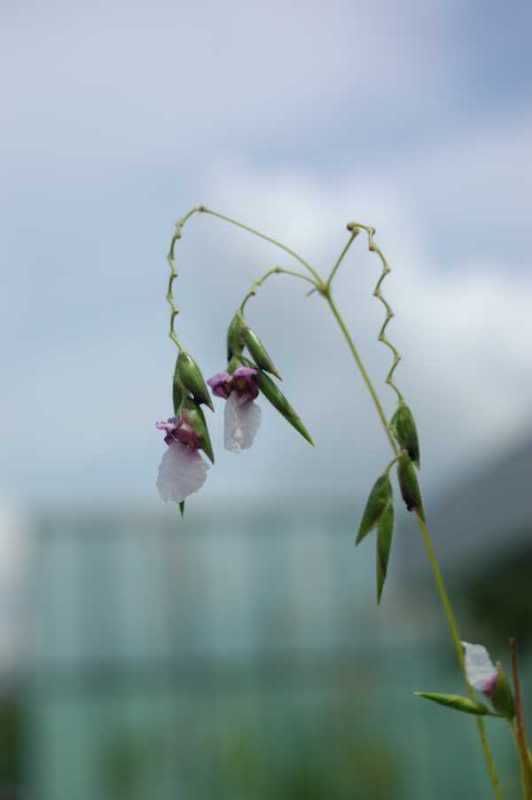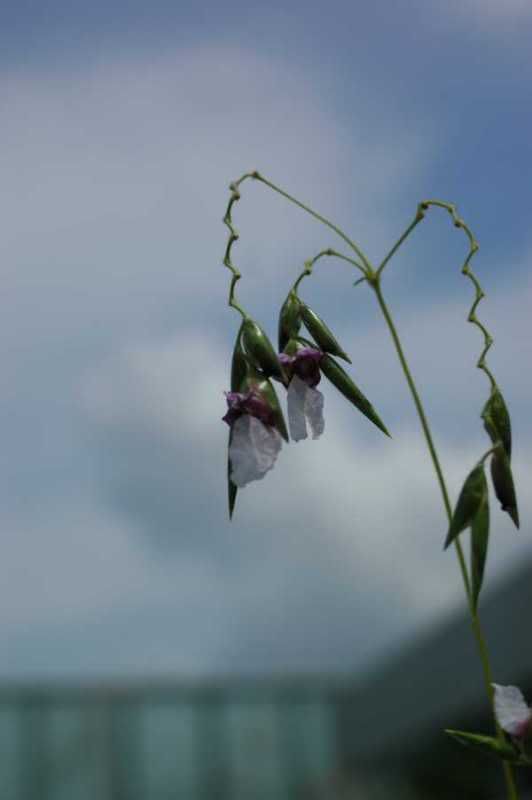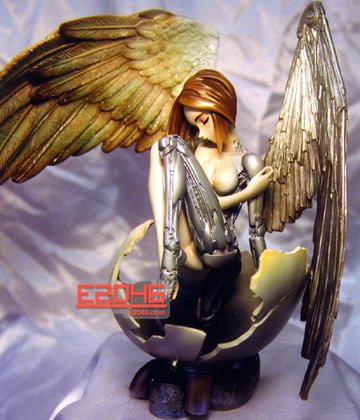-
Posts
1553 -
Joined
-
Last visited
Content Type
Profiles
Forums
Events
Gallery
Posts posted by Lynx7725
-
-
One is in focus, the other one isn't. The one that's not in focus happens to have a shallower depth of field but the subject isn't properly in focus, with the F stop open like that you've also over exposed the image, blowing out all the contrast.
That's an interesting observation. Can I check, which one in your opinion isn't in focus (Let's call the first one A and the second B, for clarity? Technically speaking, both photos are focussed, just on different things, and as you said, with different aperture (but IIRC, neither really had their contrast blown that far out).
It's interesting because I am having a discussion on this set of photos with another photographer, and there were some other observations made.. I'll share them later, to see if anyone also draws on the same line of thought.
EDIT:
also the composition is crap in the first picture, much better in the second. putting your subject dead center= boring photos 90% of the time.it is a good example of how you can compensate for fail auto focus with exadurated DoF.
Eh, interesting too. My ability to compose isn't very good, I'm more a technical shooter, not that artistic in nature. Still, I fail to see the difference amongst the two pics, because I shot them very similarly... dead focus center (these are very small flowers and there's a breeze, so very difficult to control).
And yes, it's an example of DoF compensating for focus, but not quite the way you're thinking (if I understand correctly). I'll provide additional pics later tonight, when I get back home.
-
Hmm, here's a little exercise for the photographers here.
Please observe the following two shots:


Both shots are taken within minutes of each other. No photo manipulations have been done other than scaling it down for web purposes.
The questions are: Which is a better shot? And Why?
Additional: What are interesting aspects of photography technicalities that these two photos demonstrate?
-
First off, I think we're throwing too many concepts and some mid to high level techniques towards newcomers. Let's keep things simpler for now, ok?
I'll try that.. but i was so worried not to mess with the lens too much and to make sure that i don't start turning it when it was in auto mode.. (it did say in the manual that if i turned the lens during auto it can damage the lens or the camera)What the manual means is that if you change the mode while the camera is focussing, it can damage the lens or camera (particularly if it's an older, screw-driven lens). This is as there are some cameras out there that has a physical Manual/ Auto switch, so throwing it while the camera is spinning the lens for focus can lead to much grinding.
Most of the new lens nowadays are on Silent Wave Motor, and they are engineered such that if you grab the focus ring while the camera is focussing, the resistance will override the autofocus. It's not really something you should do often, so having some caution here is a good thing.
For now though, there's really two things that you need to understand. First, to work out what posture is good for photography -- basic stances, stability, control. A lot of bad photography is related to bad posture, so getting that out of the way is a good thing.
Second, is to understand the relationship between f-stop, shutter speed and ISO, and how metering sits in the whole relationship. This will help you understand the idea that photography is a whole bunch of compromises thrown together.
BTW, I fully support the idea that a photographer should learn to shoot on manual mode, to gain a good understanding of the physics involved. That might seem a bit daunting at the moment, but it's not terribly difficult once you have basic concepts correct.
-
Hey,, what's with all this talk of shallow depth of field is no good?

Nobody said anything about not good -- it's all about the effect you are going after anyway.
Sufficient DoF is harder to achieve than shallow DoF, so it's probably better to learn how to do suffcient DoF then figure out how to achieve a particular effect than the other way round.
TBH, overly-shallow DoF is overdone, especially in super-robot shots. When it's appropriate and well done it's nice, but often it just end up (literally) blurring out details.
-
Excuse the pics.. still learning..

Well, some suggestions --
1st, black on black background is tricky; Nikon's focussing is contrast-based, so it's going to be hard to focus. Try instead to have a contrasty background to "pop" the subject.
2nd, you should use a tripod for this kind of shoot. If you are already, you have a broader range of options, so you need to know how to take advantage of them. Leading to #3...
3rd, f/4.5 isn't going to work for a long object like a Valk -- the DoF is not sufficient. Nikon's ISO performance isn't terrible, so you can easily go up to ISO 640 or even 800 without too much noise. You can use this to make the aperture smaller, say f/11 or so. You can also use that ISO band to up the shutter speed of the shot -- 1/25s is hand-shake territory. Still, with this kind of photography, you would most likely want aperture to have priority over shutter speed.
4th -- and getting more technical here -- you might want to use spot or center-weighted metering instead of pattern metering (the default). Nikon metering is conservative, and usually under-exposes. On a black object, this compounds; on a black object on a black background, it compounds some more. Using center-weighted metering on this kind of photography usually works out better, as it meters off the subject (or rather, around the focal point) rather than then whole scene.
-
In the rare occasions the belly plates come together at all, I've never seen them hold without a gap for more than about 2 secs. Not without other parts popping out. You can either have the belly gap gone, OR have the rear fuselage fit together. Not both.
Can be done. The legs have to go in a very specific way in a specific pose at a specific place, and you end up bending the belly plates a bit, but can be done.
-
True True.
-
Well obviously it didn't stop HG/Toynami from doing the VF-1R. Obviously Yamato isn't either of those companies but it could potentially stop them if they need the licensors to sign off on the products they release?
Maybe. It also depends on the circumstances. Is it of benefit to both Yamato and the licensors to have some customs on the market? Imagine if they release a 1/60 Thunderhammer, or a Minmay Guard squadron. Would there be buyers? I would think so. Would it make Macross more visible to the general public? Possibly, or it can raise awareness. It all depends on the motivation and sales pitch.
Technically, they already have a precedence. The CF-1J is a narrowband Valk, appearing only for tiny portions of the show. This might or might not be an animation error -- nothing really to say it isn't a CF-1D right? At the moment just our assumptions and we can argue back and forth about it. So why not? The only real question is how many can be sold. Probably not -- a CF-1S would probably outsell a CF-1D.
I'm really not trying to dig against you. I'm just saying, there's really no reason not to create such "customs" other than whether people would buy them, and whether the licensors feel that such sales would benefit them. A CF box with 1A, 1J and 1S heads, maybe interchangable 1D head and front plate, might sell at the right price point. Anime-accurate is important for some reasons (getting the basic design right, or for a specific character), but after that, the sky's the limit.
-
That's just a mistake. You can see the animators swapped the VF-1A and VF-1D heads. They also traced the lineart a lot for those poorly animated episodes and the only Valkyrie with enough different views is the VF-1A. Even Roy's VF-1S turned into a VF-1A in those poorly animated episodes.
That going to stop a manufacturer from bringing out a "custom"?
Anime accurate is good, but having a wider selection is better. I've seen so many repeats of Max/ Miriya/ Roy/ Hikaru over the years in various scale that it's getting stale. Bring on customs! Skull-1Js, CF-1S, Minmay Guard-1A, Elint Angel Bird Seeker <-- ok, that's going to be a bit odd...
-
Unless your manual settings are something like f22, 1/4000th, iso 100. Then you'd actually get a black pic.

Easier just to leave the lens cap on...
-
This episode is full of animation errors... more so than any other episode... just look at the escort CF VF-1s.... what kind of head is it having???
Well, looks like a CF-1D to me... More mold for Yammie to milk.
-
its good that canon has 4 versions out in the market. i had a chance to play with the 3 lens (f/4, f/4 IS and the 2.8 IS) theyre all sharp overall but i love the f/4 IS and the 2.8 IS very much. would like to have one of them in the future.
Why not both?
 :D
:D  To be honest I would go for IS/ VR where possible, their assist is very useful. It's only if the basic glass is very much an improvement over the VR lens that I would have issue. Thankfully, Nikkor glass tends to be exceptional, so I rarely run into that.i start with F/4 when i do portraiture and off-camera flash photography. the DOF is just about right for those kinda stuff
To be honest I would go for IS/ VR where possible, their assist is very useful. It's only if the basic glass is very much an improvement over the VR lens that I would have issue. Thankfully, Nikkor glass tends to be exceptional, so I rarely run into that.i start with F/4 when i do portraiture and off-camera flash photography. the DOF is just about right for those kinda stuffWell, I can also achieve the same aperture with a f/2.8, although the bokeh and image quality might be different. I guess I just don't do those stuff, so I can't see a need for a f/4 (and hence why my glass collection doesn't have one...)
-
ofcourse it can only do F/4... there is no perfect lens. but there is no denying that this lens is the sharpest (70-200mm canon lens) and the distortion is almost non existent much like primes. im just saying


Yeah, I know. I'm just saying sometimes lens reviewers go gushy-gushy over a lens' performance in viglentting, or barrel distortion, or chroma... and then conclude it's THE lens of the year or some such. Doesn't work that way, a lens work within the parameters it is designed with, and whether your photographic needs fall into those parameters would determine whether the lens works for you.
But to be honest, I can't really think of many situation where I'd want a f/4 lens of any type. It's just not a set of circumstances I normally shoot under...
I definitely need to get a good camera - but that's probably something I'll be able to think about realistically next year...maybe for my birthday...Actually, don't go out to shop yet. Most consumer cameras are more than adequate for 60% to 70% of the situations most people shoot under, and they have additional advantages in compactness and weight that cannot be ignored nowadays. NOI, but the odds are good that you hadn't maximize the potential of your current camera.
If you are really serious about photography, understanding the concepts and theories behind photography will allow you to maximize your camera's potential. More importantly, without knowing those, it's hard (but not impossible) to get the most out of any camera you may upgrade to. SLRs in particular need to have a good grounding to get the most out of, because in 60% to 70% of the circumstances, you are just using a bigger and heavier camera to achieve the same results... Can't justify the expense that way.
-
according to photozone
"The Canon EF 70-200mm f/4 USM L IS may well be the very best tele zoom on the market today - it is certainly the best Canon zoom lens tested locally to date. The lens was capable to deliver a near-flawless performance is all categories. The resolution figures are stunning regardless of the setting. Distortions, vignetting and CAs are nothing to worry about. The build quality is excellent with the new sealing as a another highlight. On top of that the lens now features a image stabilizer with an efficiency equivalent to 4 f-stops (at cost of shutter speed). The only heartbreaking drawback for some is the price tag which increased significantly to a whopping grand - price/performance-wise this is still very sound though".
Uh huh, uh huh... so how does it shoot? I mean, indoor hall with dimmed lighting, no flash, ISO maxed out, can it still do the job at ranges of 15 ~ 20m? The glass may be good but that f/4 is a fundamental barrier that restricts the lens a bit.
-
It works, IS and VR are pretty much the same thing. It's good because you can get away with a higher f stop... nice if you're trying to catch something small/fast and worried about the depth of field and getting the subject in focus.
Well, I tend to use IS/ VR to get higher shutter speeds, but yeah, that's another possibility. Still, most of the time the immediate benefit is to get a stable picture -- amazing how a little hand shake can affect a picture.
-
IS is good for one other thing, tracking shots; birding, sports, cars, etc. Helps minimize the hand jiggle and movement blur. But 200mm is really too short for most of those activities.
VR I know can do that, but I'm not sure about IS. At any rate, I've never really thought it that good at tracking fast moving objects... It works, but I'm not too sure how much it really helps.
-
anyways, serious question: I've been saving up for a new telephoto lens, and by Christmas I should have enough for a nice new 70-200mm L series.

It's either going to be a 70-200mm f/4 IS or a 70-200mm f/2.8.
the price is about the same so the only real difference is weight and aperture vs. image stabilization; so I'm wondering, would I be better off with 4 stop IS and a pound less weight or a full stop faster aperture?
As Eugimon says, it largely depends on your shooting style and preferences. Where the f/2.8 would have an advantage:
- If you are shooting fast moving object (sports, cars, etc), you might want the f/2.8 to maximize shutter speed (to "freeze" the subject).
- If you are shooting in low light (weddings, functions, etc) and you have to work at a distance and cannot use a flash unit, the f/2.8 can give you that range necessary to work.
Where the f/4 IS have an advantage:
- If you are shooting closeup using the zoom (the Nikkor 70-200mm f/2.8 VR has a great bokeh for this), then the VR/ IS is very useful in such cases, and you might want to go for the f/4 IS lens.
- If you are shooting on the move (i.e., you are hiking, doing a lot of movement), then lesser weight is a good thing.
Where it doesn't really matter:
- If you shoot (relatively) stationary objects from long distance in daylight (e.g., unaware animals, girls in bikini on a beach, scenary that doesn't move about, that kind of things), then either lens is good enough.
- If you are shooting at night but using long exposure, then either one is good -- or bad -- enough. (fairly wasted capability IMO, but still...)
The problem here is IS. In Nikon terms, VR and VR II actually does help, in narrow circumstances, to allow you to shoot at a higher shutter than normal conditions. I.e., a 1/30 shot can be possibly done at 1/60 instead. It's quite helpful there. Since shutter, aperture and ISO all combine in the shooting of a photo, a f/4 IS and a f/2.8 normal may actually not have significant differences in capability under those circumstances... however, on a personal basis, I would prefer a f/2.8. Electronics may fail, but glass won't short of cracking -- mostly.
-
yeah dude i am,its solid. lovin it,easily best racer of 09.
I won't know. The only other racer I have is Burnout Paradise, and I got that for the smashes.

Fujimi Kaido is a b****. But I love her all the same.
 Taking my S-class RX-8 up that hill is a humbling experience -- just tuning the thing to get it to work right going up the hill is a learning experience.
Taking my S-class RX-8 up that hill is a humbling experience -- just tuning the thing to get it to work right going up the hill is a learning experience. -
So, anyone tearing up the track with Forza Motorsport 3? Having a blast here.
-
Just to add (and yes, to rub it in), HLJ delivered mine yesterday. Still crated though.
-
Nope. Still wrong forum.
-
-
If I'm not mistaken, that's a plug-in piece from the Armoured Valkyrie set, to go into the neck area to make it look better.
-
The modded EB Saber is probably the best regular armor Saber around, if you're willing to do the mod and sacrifice another figure.

To be honest, I only picked up EB Saber after I saw a net article on the mod, and I picked up the sacrificial Koto Saber to do it. I figured, since I'm going to put the moolah down for the EB Saber -- which cost a pretty penny! -- I might as well do her right. Didn't regret it.
And for some reason I have the GSC Maid Saber.
TBH that Maid Saber just looks wrong. Not the sculpt, but the overall idea of it. Not "Saber" per se.
I honestly wish I could get some of the more classy statues in, but space is a premium. There's this Belldandy sculpt that is absolutely lovely, but I won't have space to display it in. Rest of what I have is a pair of 1/6 Kereboros armour that I picked up over the years. The T&A statues/ figs, is a NSFW/H kind of thing, so I have to pass on some of them... but to be honest, most aren't to my taste either.



The Professional Photography and Photoshop Thread
in Toys
Posted
Ok, here's the EXIF:
A: 35mm at f/2.8 , 1/6400s (yes, it's very bright that day), EV 0, center weighted. Odd, the EXIF left out ISO, I have to check the original.
B: 35mm at f/4, 1/6400s, EV 0, center weighted.
Thus, the real difference is in the aperture (and thus DOF), and the framing. WB should be on auto, I didn't set it per se.
That's very odd about the "hot" part, because... well, maybe that's not what you meant. Maybe screen calibration?
But agreed, if the stops had been down by 2 or more (I can afford even more actually, at 1/6400s), might have gotten more shadows/ contrasts. It's a bit blown out, I'd agree.
The odd thing about these two photos, is that if you examine the originals (and IIRC), A has the focus on the front flower, while B has it on the back flower. Yes, B had the focal further back and the DoF at f/4 wasn't actually capable of covering the whole range -- I'll put up some additionals later tonight to show what I mean. However, downscaling the images gave a little bit more DoF, making it looks better than the original.
Technically speaking, in terms of focus I find A better, but in terms of overall effect I would say B is more to what I want. But what I like about these two photos is that they show even a not so technically good photo can convey a pic better -- it boils down to the effect that you are looking to achieve, and whether you can stretch your -- and your camera's -- capabilities to achieve it.
Also, it highlights that Auto WB.. while not sucking, can be very inconsistent shot-to-shot. That's fine if your surrounding lighting is constant, but even then your shot effect can vary. Time to break the bad habit and going back to manual WB...
As for the composition, I tend to shoot for web use, and after trying to get the composition dead on, I realised that I'm shooting at 3000x2000 (D70 is a 6mp camera, nowadays you get even MORE), I'm never going to use all that pixels, and I commonly post at 800x600, so what's the point of doing such a tight composition when I can crop it? Shoot fast, shoot right, use photoshop to get the composition tight. Film photography doesn't have this luxury, but digital does -- and should explore it further.
That's a very nice shot. Good one!